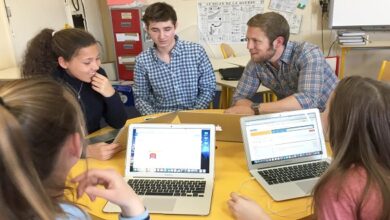IN REAL-LIFE LEARNING, WHAT IS MEANT BY REAL’?

INTRODUCTION
Incept is whether it is ‘real’. By this we often mean: ‘is it something that can now be used, or that will be of use to us in the business or consumer world we know?’ “What is REAL?” asked the Velveteen Rabbit one day, when they were lying side by side near the nursery fender, before Nana came to tidy the room. “Does it mean having things that buzz inside you and a stick-out handle?
But the concept of ‘real’ can be interpreted in many ways, particularly as it applies to information systems (IS) education. One possibility is that we mean that the learning takes place in actual (real) business organizations. Another is that we are referring to the acquisition of useful skills that have some every-day (real) or employment-related application.
APPLES, MOBILES, TRAINS, MONSTERS, VELVETEEN RABBITS AND REALITY
The question of whether or not something is ‘real’ has often also been put of computers and other technological entities. The Apple II computer was briefly popular with business in the late 1970s and early 1980s because it allowed users to run VisiCalc – the first spreadsheet program.
Sculley, CEO of Apple during this period, notes that VisiCalc was responsible for “putting the Apple II on many business desks” but that when the IBM PC came along with Lotus 1-2-3 in 1983, business dropped the Apple and VisiCalc in favour of the IBM combination.
The Apple II was thus never entirely ‘real’, except perhaps in education where it was real for several years when many schools made good use of this machine. It was the spreadsheet program that business wanted, and the Apple II was just a means of delivering this.
The IBM PC, on the other hand, quickly moved from the status of an expensive toy used only to play games and run Lotus 1-2-3, to being considered a real and useful machine. Following the IBM PC’s successful acceptance by business, other microcomputers of the MS-DOS variety soon also came to be considered real.
REAL PROGRAMMING LANGUAGES
One of the first tools by which computer professionals defined themselves was the use of programming languages. But to be considered a computer professional it could not be just any programming language that you used; you had to use a ‘real’ programming language or else you were seen as just a hobbyist playing with a toy. In similar vein, the operating system you worked with was another way of determining whether you were a ‘real’ computer professional. Apple II DOS was definitely not considered real whereas CP/M and UNIX were. At one extreme some would also not consider MS-DOS, Microsoft Windows or Mac OS as real either; to them it had to be something like MVS or OS/400. Franklin puts it this way:
“The historical process of defining a group by their agreed practice and by their tools is a powerful one.”
CONCLUSION
How important is it for information systems curriculum content to be seen as ‘real’? The answer is that it all depends on the particular university involved. For some, more traditional, universities this is seen as an irrelevant concept, as all that matters is that something is considered ‘academically worthwhile’ – whatever they might mean by this, hi other universities, especially in Universities of Technology, there is felt to be a particular need to relate IS curriculum to the needs of the local industry and of students. It is in the latter case that issues of ‘real’ IS curriculum content will be debated.





